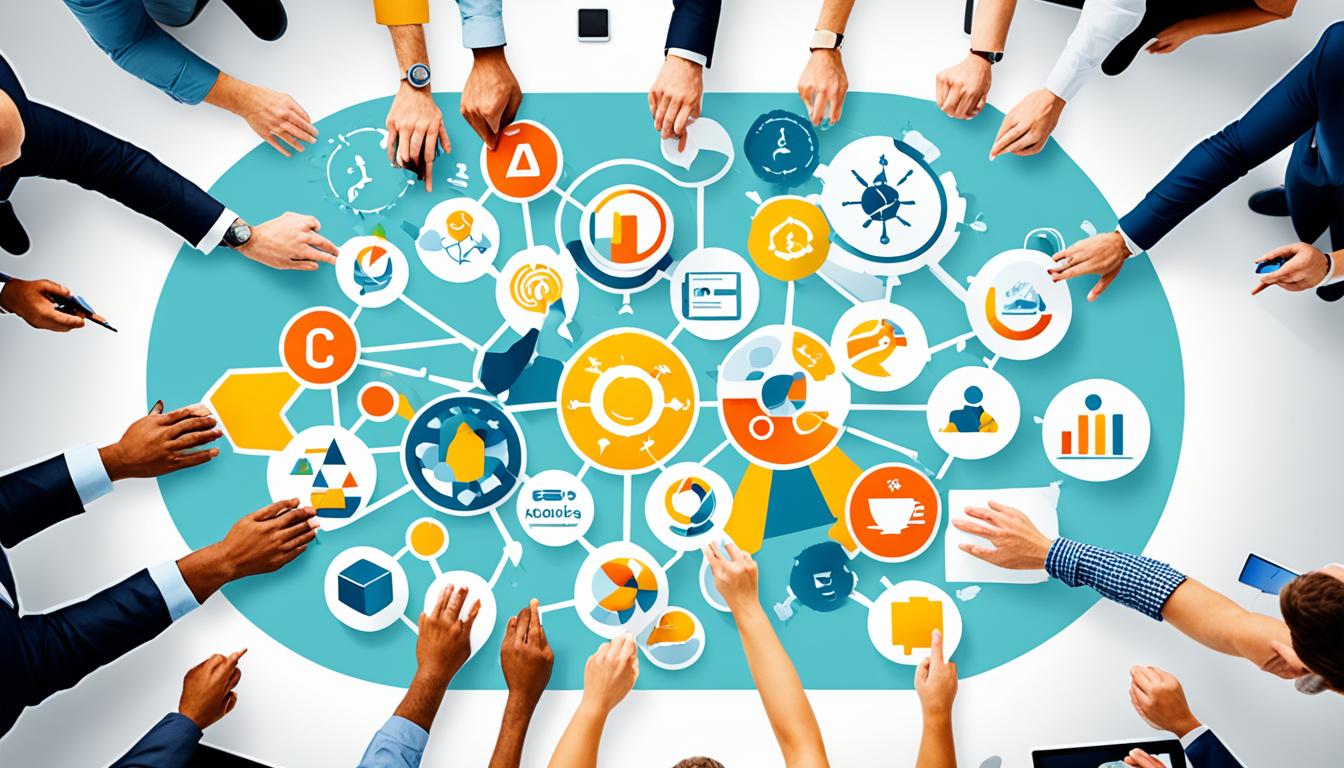Team dynamics in the workplace play a fundamental role in shaping the success and productivity of organizations. It involves the intricate patterns of communication, cooperation, and collaboration among team members. By understanding and improving team dynamics, companies can foster a harmonious team environment that enhances performance and drives success. Moreover, effective leadership is crucial in nurturing positive team dynamics in the workplace, as leaders set the tone for interaction and establish trust within the group. Encouraging open dialogue and valuing diverse perspectives can significantly contribute to stronger relationships among team members. Ultimately, prioritizing team dynamics in the workplace not only boosts morale but also leads to innovative solutions and heightened overall efficacy.
Effective team dynamics are crucial for achieving synergy and harnessing the diverse skills and perspectives of team members. Different team interaction models and group behavior patterns influence the dynamics within a team. It is essential to identify and leverage these dynamics to unlock the full potential of the team and optimize performance.
Key Takeaways:
- Team dynamics in the workplace refer to the intricate patterns of communication, cooperation, and collaboration within a team.
- Poor team dynamics can significantly impact team performance, while positive team dynamics enhance collaboration, communication, and morale.
- Identifying and leveraging different team interaction models and group behavior patterns are essential for optimizing team performance.
- Understanding and improving team dynamics contribute to a harmonious team environment and drive success in organizations.
- Fostering strong team dynamics involves effective communication, building trust, defining roles, promoting diversity and inclusion, and implementing conflict resolution strategies.
What is Team Dynamics in the Workplace?
Team dynamics at work encompass the interactions, relationships, and behaviors among individuals within a team. It includes communication patterns, power structures, roles and responsibilities, conflict resolution strategies, and the level of trust within the team.
Team dynamics are not limited to formal meetings or projects but extend to informal interactions as well. It is the undercurrents that determine a team’s effectiveness and productivity.
Effective team communication is a vital component of team dynamics at work. It involves open and transparent exchanges of ideas, information, and feedback among team members. Clear communication channels facilitate collaboration, problem-solving, and decision-making, leading to improved outcomes.
“Effective team communication is the cornerstone of successful team dynamics. It encompasses active listening, articulating ideas clearly, and asking thoughtful questions to ensure understanding.”
Group synergy dynamics also contribute to successful team dynamics. When team members collaborate synergistically, they bring their diverse skills, experiences, and perspectives together to achieve common goals. Synergy sparks creativity, innovation, and productivity, leading to outstanding team performance.
To illustrate the importance of team dynamics in the workplace, consider the following example:
The image above showcases a team engaged in productive discussions, collaborating, and demonstrating effective team communication and synergy.
The Importance of Team Dynamics in the Workplace
Team dynamics play a pivotal role in shaping the success and productivity of a workplace. Positive team dynamics enhance collaboration, communication, and morale. They contribute to effective conflict resolution, increased accountability, and professional development. Strong team dynamics also foster resilience to change and contribute to a high-performance culture. Additionally, they attract and retain talent, creating a supportive and engaging work environment.
| Benefits of Positive Team Dynamics | Impact on Workplace |
|---|---|
| Enhanced collaboration and communication | Improved decision-making and problem-solving |
| Increased trust and transparency | Higher employee engagement and satisfaction |
| Effective conflict resolution and reduced tension | Enhanced creativity and innovation |
| Improved accountability and productivity | Strengthened teamwork and synergy |
“Positive team dynamics create an environment where individuals feel supported, valued, and motivated to contribute their best. It fosters effective collaboration, leading to improved problem-solving, decision-making, and overall group performance.”
When team members have a sense of trust, respect, and open communication, they are more likely to work together harmoniously and achieve common goals. Team dynamics are not limited to individual skills and abilities but also encompass shared values, goals, and beliefs that connect team members on a deeper level. It is vital for team leaders and organizations to invest in fostering positive team dynamics to unlock the full potential of their teams.

Examples of Team Dynamics
Team dynamics can have a profound impact on the success and effectiveness of a team. By examining real-life examples of team dynamics, we can better understand the power of collaboration and individual contributions. Two notable examples that highlight the strength of team dynamics are the Collaborative Orchestra and the Synergy Spark.
Collaborative Orchestra:
The Collaborative Orchestra is a remarkable example of team dynamics in action. Similar to a symphony orchestra, team members with diverse skills and expertise come together to create innovative solutions. Each individual plays a unique role, just like a musician in an orchestra, and collectively they harmonize their efforts to achieve exceptional results. Just as the different instruments contribute their own unique sounds to a symphony, the Collaborative Orchestra benefits from the varied perspectives and talents of each team member. This collaboration allows for the integration of complex ideas, fostering creativity, and ultimately creating a powerful synergy that propels the team forward.

Synergy Spark:
The Synergy Spark is another example that demonstrates the positive impact of team dynamics. In this context, team members inspire and motivate each other, igniting a spark that fuels heightened creativity and productivity. Through genuine support, encouragement, and recognition, team members elevate one another’s performance and cultivate an environment where new ideas thrive. This dynamic interaction generates an energy that drives the team towards achieving exceptional outcomes.
The Collaborative Orchestra and the Synergy Spark showcase how effective team dynamics can harness the collective talents of individuals and elevate team performance. By embracing collaboration, celebrating diversity, and nurturing a supportive environment, teams can unlock their full potential and achieve remarkable results.
How to Foster Strong Team Dynamics
Building and maintaining strong team dynamics is essential for organizations to maximize productivity and achieve success. Effective communication, trust-building, role definition, diversity promotion, and conflict resolution strategies are key elements in fostering positive team dynamics.
Open and transparent communication channels are crucial for team members to exchange ideas, share feedback, and resolve issues. Regular team meetings, both formal and informal, can facilitate effective communication and ensure everyone feels heard and valued.
Building trust among team members is essential for creating a supportive and collaborative work environment. Leaders should encourage trust-building activities, promote transparency, and encourage open dialogue to establish a foundation of trust and mutual respect.
Defining clear roles and responsibilities enables team members to understand their contributions and expectations. This clarity minimizes confusion, avoids duplication of efforts, and enhances overall team efficiency. It is important to regularly revisit and update these roles, allowing for flexibility and growth.
Promoting diversity and inclusion in team dynamics fosters creativity, innovation, and broader perspectives. Embracing diverse backgrounds, skills, and experiences not only enhances problem-solving abilities but also creates a richer and more inclusive work environment.
Implementing effective conflict resolution strategies is crucial for maintaining positive team dynamics. Encouraging respectful discussions, active listening, and finding common ground can help teams navigate conflicts in a constructive manner, leading to improved relationships and overall team performance.
By prioritizing effective communication, trust-building, role definition, diversity promotion, and conflict resolution strategies, organizations can foster strong team dynamics. Creating a supportive and engaging work environment allows teams to unleash their full potential, drive success, and achieve remarkable results.
FAQ
What are the different types of team dynamics in the workplace?
The different types of team dynamics in the workplace include communication patterns, power structures, roles and responsibilities, conflict resolution strategies, and the level of trust within the team.
What is team dynamics in the workplace?
Team dynamics in the workplace refer to the intricate patterns of communication, cooperation, and collaboration within a team. It encompasses the interactions, relationships, and behaviors among individuals within a team. Understanding team dynamics in the workplace is essential for fostering a positive and productive environment. Effective communication can lead to enhanced collaboration and problem-solving, while unresolved conflicts may hinder progress and morale. By actively promoting healthy team dynamics in the workplace, organizations can drive innovation and achieve their goals more efficiently.
Why are team dynamics important in the workplace?
Team dynamics are crucial for productivity and success in organizations. Positive team dynamics enhance collaboration, communication, and morale. They contribute to effective conflict resolution, increased accountability, and professional development. Strong team dynamics also foster resilience to change and contribute to a high-performance culture.
Can you provide examples of team dynamics?
Examples of team dynamics include the collaborative orchestra, where individuals with diverse skills collaborate like an orchestra to create innovative solutions, and the synergy spark, where team members inspire and motivate each other, leading to heightened creativity and productivity.
How can organizations foster strong team dynamics?
Organizations can foster strong team dynamics by focusing on effective communication, building trust, defining roles and responsibilities, promoting diversity and inclusion, and implementing conflict resolution strategies. Open and transparent communication channels, promoting collaboration and mutual respect, and providing opportunities for personal growth and development are key elements in nurturing positive team dynamics.


